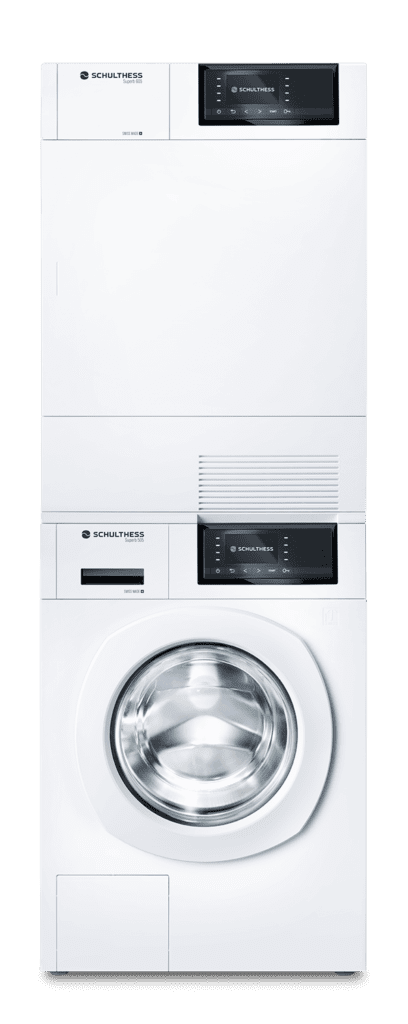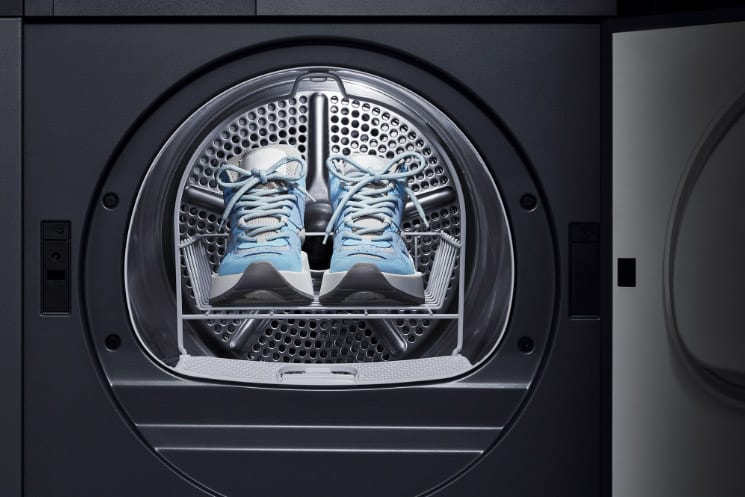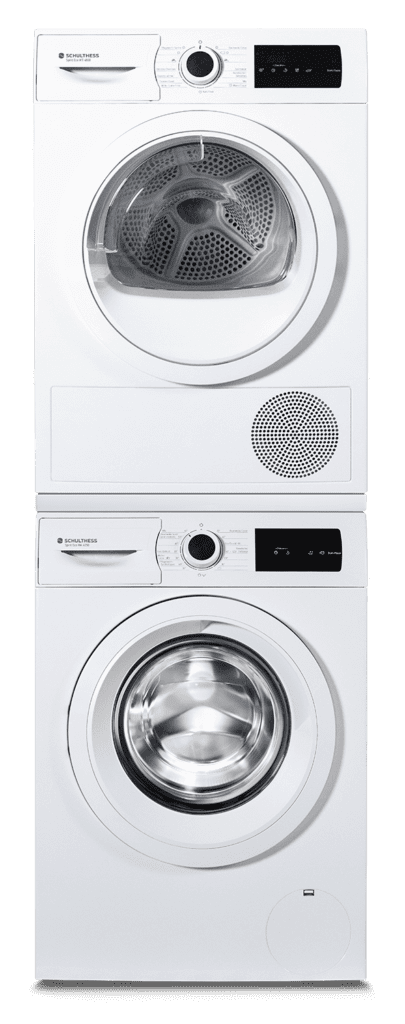Before the new machines can be installed, the old ones have to be removed. For this purpose, three Schulthess service technicians meet in front of the large building of the nursing home at 7:30 in the morning of Thursday 27 August. It is still cool and the home is in the shade, but the blue sky heralds a beautiful day.
The safety officer of the St. Peter and Paul nursing home explains everything to the service technicians and shows them the laundry. After a few details have been discussed, it’s time to deinstall the old machines. The connections to the water and the detergent dosing system have already been disconnected. The Schulthess technicians now open the lids of the two washing machines and dryers and disconnect all the cables that are still connected. Then the machines are closed again.
Now the question arises: How do you move the heavy machines from the laundry out onto the street? Since the laundry is located in the basement of the nursing home, we enter and leave it through the garage. However, the entrance consists of a long curved ramp, which makes transporting the appliances a challenge.



